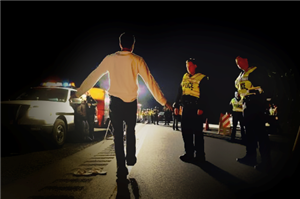Alcohol and Drug Awareness
-
Please read the following information.
Alcoholic beverages are not permitted, at any time, under any circumstances, on the high school campus, in the high school building, or on any Mountain Brook Schools property. In fact, it is a felony crime to possess alcohol on a public school property.
It is also a violation of school rules to come to school, or any school event, under the influence of alcohol or any illegal drug. This includes any school-sponsored off-campus events.
Our surveys show that many of our high school students drink alcohol. So, prior to driving to and from the high school, we want to remind students of some of the dangers associated with alcohol use. Many of these will also apply to illegal drugs.
- Alcohol affects every part of the body. It is carried through the bloodstream to the brain, stomach, internal organs, liver, kidneys, muscles – everywhere. It is absorbed very quickly (as short as 5 - 10 minutes) and can stay in the body for several hours.
- Alcohol affects the central nervous system and brain. It can make users feel more relaxed but, unfortunately, it can also make them more aggressive.
- Alcohol lowers inhibitions, which can set drinkers up for embarrassing or dangerous behavior. In fact, each year approximately 5,000 young people under the age of 21 die as a result of underage drinking. This statistic includes about 1,900 deaths from motor vehicle accidents; 1,600 homicides; 300 suicides; and hundreds of others stemming from injuries such as falls, burns and drowning.
- It is now known that the human brain continues to grow and develop into the mid-20s. Neuroscientists believe that the developing brain is susceptible to damage from alcohol use during these early years.
Many people get confused about the amount of alcoholic beverages that make up a “drink.”
A standard drink is:
- One 12-ounce bottle of beer or wine cooler;
- One 5-ounce glass of wine; or
- 1.5 ounces of 80-proof distilled spirits.
Health Hazards
Did you know that alcohol can impair the parts of the brain that control the following?:
- Motor coordination. This includes the ability to walk, drive and process information.
- Impulse control. Drinking lowers inhibitions and increases the chances that a person will do something that they will regret when they are sober.
- Memory. Impaired recollection and even blackouts can occur when too much alcohol has been consumed.
- Judgment and decision-making capacity. Drinking may lead people to engage in risky behaviors that can result in illness, injury and even death.

Risky Behavior
Many kids start drinking in high school, some try alcohol even earlier. More kids use alcohol than use tobacco or illicit drugs and more children are killed by alcohol than all illegal drugs combined.
What are the risks of alcohol use?
Dependence. People who reported starting to drink before the age of 15 were four times more likely to also report meeting the criteria for alcohol dependence at some point in their lives. In fact, new research shows that the serious drinking problems (including what is called alcoholism) typically associated with middle age actually begin to appear much earlier, during young adulthood and even adolescence.
Illicit drug use. More than 67 percent of young people who start drinking before the age of 15 will try an illicit drug. Teens who drink are over 7 times more likely to use any illicit drug, are over 22 times more likely to use marijuana, and 50 times more likely to use cocaine than children who never drink.
Legal problems. Alcohol-related legal charges are all too common in teenagers. All alcohol use is a violation of the law among those under 21. Young people who are charged with "minor in possession," public intoxication, or DUI face serious legal consequences and create pain and distress in themselves and their families. These legal consequences can close off some educational and occupational opportunities.
Sexual assault. Alcohol use by teens is a strong predictor of both sexual activity and unprotected sex. A survey of high school students found that 18 percent of females and 39 percent of males say it is acceptable for a boy to force sex if the girl is high or drunk.
Violence. Young people who start drinking before age 15 are 12 times more likely to be injured while under the influence of alcohol and 10 times more likely to be in a fight after drinking, compared with those who wait until they are 21 to drink.
School Problems. Student substance use is a risk factor for, academic problems, such as lower grades, absenteeism and high dropout rates. Alcohol can interfere with a student’s ability to think, making learning and concentration more difficult and ultimately impeding academic performance. In fact, the more a student uses alcohol, tobacco and other drugs, the lower his grade point average is likely to be and the more likely he is to drop out of school.
Drinking and Driving. When young people drink and get into a car, they tend to make poor decisions that impact their safety. Traffic crashes are the number one killer of teens and over one-third of teen traffic deaths are alcohol-related.
Go to Module 4


